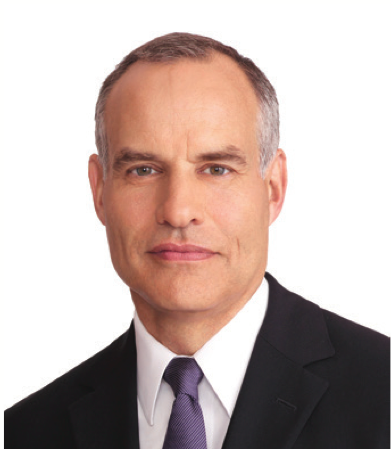The bond market’s volatility in the first quarter of 2016 had a familiar feel to it, as persistently sluggish global growth prompted renewed efforts by central banks to combat it. The good news is that after the quarter’s gyrations, value in specific credit sectors discussed in our fourth-quarter 2015 report remains intact, despite strong rallies in these sectors after mid-February.
The year started ominously for risk assets, with a large sell-off in equity markets as well as the high-yield bond and floating-rate loan credit sectors. Investors reacted to fears of another global downturn akin to the financial crisis, possibly sparked by a Chinese hard landing and currency devaluation, and a U.S. recession. The S&P 500 gave up 9% between January 4 and February 11, with smaller losses for high-yield bonds and loans.
Central banks responded with a multipronged stimulus package by European Central Bank President Mario Draghi, and moves by Federal Reserve Chair Janet Yellen to scale back the number of rate increases expected this year, citing risks posed by “global economic and financial developments.” China, for its part, denied that it was planning a major currency devaluation and pledged to do more to boost its economy.
Markets bounced back sharply – the S&P 500 regained 12.6%, and high-yield spreads tightened from 887 basis points (bps) to 705 bps – just 10 bps wider than year-end, based on the BofA/Merrill Lynch U.S. High-Yield Master II Index. Exhibit A shows the V-shaped recovery of equities in the second half of the quarter.
Taking measure of interest-rate and credit risks
Despite the rebound, today’s environment poses a unique set of interest-rate and credit risks for fixed-income investors. Profits for S&P 500 companies are expected to fall 9% for the fourth quarter, which would be the fourth consecutive quarterly earnings decline and the first such streak since the financial crisis. Tepid economic growth remains a burden on companies. At the same time, we believe the Fed is still likely to raise its target fed funds rate this year, as it is very close to achieving (and perhaps exceeding) both its unemployment and inflation targets. Though not as urgent as previously thought, fixed-income investors remain vulnerable to rising short-term interest rates.
In this vein, we believe the case for the three sectors we highlighted in our fourth-quarter report – high-yield bonds, floating-rate loans and municipal bonds – remains intact, should short-term rates rise.
In Exhibit B, the dotted square box shows the last period (2004-2007) in which the Fed hiked its target fed funds rate. All three sectors had positive total returns during that period, so it would appear that a likely scenario of modest hikes would pose relatively little threat to returns in these three sectors.
Credit concerns also remain legitimate, given continuing slow economic growth combined with a reasonable likelihood that the U.S. economy is in the latter innings of the current credit cycle. Despite this, however, in our view current valuations and income offered by below-investment- grade debt more than compensate for the credit risks assumed. We also believe active management is particularly important and relevant currently, given deep credit stress in particular sectors, including energy and commodities issuers.
Spreads on both high-yield bonds and floating-rate loans are at levels comparable to 2011, in the aftermath of the financial crisis, and are 143 basis points and 68 basis points higher than the median over the past 10 years, respectively. Of course, spreads could always widen further, but today’s levels represent a “value cushion” that is very rare – slow growth and high expected default rates are already reflected in today’s prices, with discounts below fair value, in our view.
Scatterplots point to high-yield value
For some perspective on today’s pricing of credit, Exhibit C has two scatterplots – the left for high yield, the right for the S&P 500. The dots compare valuation levels for each month since 1988 with subsequent three-year annualized total returns. While the dots aren’t tidy, they make two basic points. In general, the southwest-to-northeast slant of the dots indicates that as the sector gets cheaper (measured by spreads for high yield and earnings yields, or E/P1, for stocks), subsequent three-year returns get higher.
The dots on or very close to the red horizontal lines – indicating the current spread level and earnings yield, respectively – make a specific point about today’s valuations. For high yield, whenever spreads have been at or near the current level of 705 bps (on the BofA/Merrill Lynch U.S. High-Yield Master II Index), subsequent three-year annualized returns have all been strongly positive, ranging from 8% to more than 20%. For the S&P 500, when stocks had earnings yields roughly equivalent to today’s level of 3.8%, the range of outcomes has been much wider – from negative 20% to positive 30%, and about a third of the time the results were negative. At current relative valuation levels, high yield has been the stronger-conviction choice for investors seeking a tighter range of expected return outcomes.
The observation above should not surprise investors. Over the past 10 years, high yield has provided almost the same return as stocks, with two thirds the volatility; over the past 20 years, stock annual returns exceeded high-yield annual returns by 121 basis points, but high yield exhibited just under two thirds the risk and a superior (higher) Sharpe ratio. The high annual income generated by high-yield bonds has been a big factor contributing to these historical risk/return relationships.
Defaults as a lagging indicator
Given that we are in the latter part of the credit cycle, we anticipate that defaults for both high-yield bonds and floating-rate loans are likely to increase from current levels; each are currently near their 10-year medians. However, if investors wait for defaults to peak, we believe they will have missed a value opportunity, because current discounted prices already reflect a significant rise in default rates.
In floating-rate loans, for example, the March 31 Index price of 91.5 means the market is expecting total credit losses of 8.5% over the lives of the loans, which on average has been three years. When you factor in an average 70% default recovery rate that lenders have historically achieved, this implies a three-year annual default rate of 9%, which exceeds the three-year annual rate during the height of the financial crisis. This scenario seems very unlikely to us.
Second, active management can be key in building portfolios of companies that may help mitigate default risk – passive allocations that mirror the Index must include all issuers, including those most at risk. Third, waiting for defaults to improve can reduce potential total return because spread tightening (bond price appreciation) historically has preceded peaks in default rates. Exhibit E shows that in 2009 and 2011, high-yield spreads anticipated the turn in default rates – the tightening started while default rates were still increasing.
Déjà vu going forward
For the bond market, the first quarter of 2016 was déjà vu all over again, which is likely to be the pattern for some time. We believe that staying focused on credit fundamentals and investing for the medium term in active credit strategies is the best approach to seek profit (or protection) from volatile markets.





